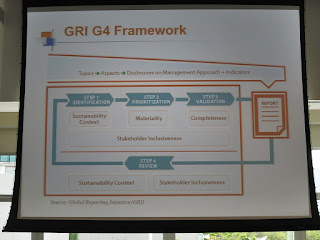Recently, I received his daughter (Ms. Liu Ming, (Mindy Fukushi)) email and she sent me an essay on her father for memory. She had influenced by Prof. Liu and became Quality Professional too. I would like to summarize some points of the article to show how Prof. Liu influent Ms. Liu Ming:
i) Don’t complaint the fact (e.g. old factory problem)! You need to accept the fact objectively and face it.
ii) Good Quality Professionals should have high standard on themselves.
iii) When Ms. Liu Ming was 12 years old, Prof. Liu handmade a very delicate small balance. At the time, Ms. Liu Ming understood how to appreciate the taste or standard of things.
iv) When she was a child, Prof. Liu blamed her about the mistake on “cm” and “m” seriously.
v) Prof. Liu had told her that people needed to observe others need (Customer Requirements / Needs) and also focused on effective.
vi) Prof. Liu’s enthusiasm and passion on TQM burn into his daughter’s mind.
The second one was Mr. Bill Hunter (One of authors on the book named “Statistics for Experimenters - Second Edition”) (1937-1986) and worked with Deming before. Bill Hunter was a consultant, educator for practitioners, communicator, and integrator of statistical thinking into other disciplines. Now, his son Mr. John Hunter become Quality Professional and one of 12 people worldwide selected by the W. Edwards Deming Institute to reconfigure Dr. Deming’s famous “Four Day Seminar” into the 2.5 day seminar “Out of the Crisis”. After read John’s blog, I observed that he visited many factories with his father when he was a child.
(Photo: We met on 15 Jun 2014 when John taught a course for HKQAA in Hong Kong.)
The third succession case was Mr. Gregory Watson (Past President of International Academy for Quality (IAQ)) and his son Mr. Andrew Watson. Mr. Gregory Watson is a leading global voice on quality and his son is an artist and educator. They wrote an article named “The Future of Customer Experience (CEx): CEx Becomes the Dominant Design Force Influencing Markets” in the ASQ 2015 Future of Quality Report.
(Photo: We met in ASQ WCQI Chairman Session in 2011)
Mr. Andrew Watson was one of keynote speakers in ANQ Congress 2015 and his topic named “The Role of Artistic Thinking as an Innovation Stimulus to Increase Quality” (http://www.anq2015.org/?product_13.html).
Therefore, I could draw a conclusion that most quality gurus practice quality principle in themselves and their quality behavior would affect people around them including family members, friends, co-workers, partners, and others.
Reference:
A View from the Q - http://asq.org/blog/
20140406: Remember Academician Liu Yuanzhang (劉源張) - Father of Quality Management in China - http://qualityalchemist.blogspot.hk/2014/04/remember-academician-liu-yuanzhang.html
20140615: HKSQ Dinner with John Hunter (Deming Institute) - http://qualityalchemist.blogspot.hk/2014/06/hksq-dinner-with-john-hunter.html
20110518: ASQ World Conference - World Partner Workshop - http://qualityalchemist.blogspot.hk/2011/05/asq-world-conference-world-partner.html
John Hunter (2015) “The Aim Should be the Best Life – Not Work v. Life Balance” and (2013) “George Box”

















































